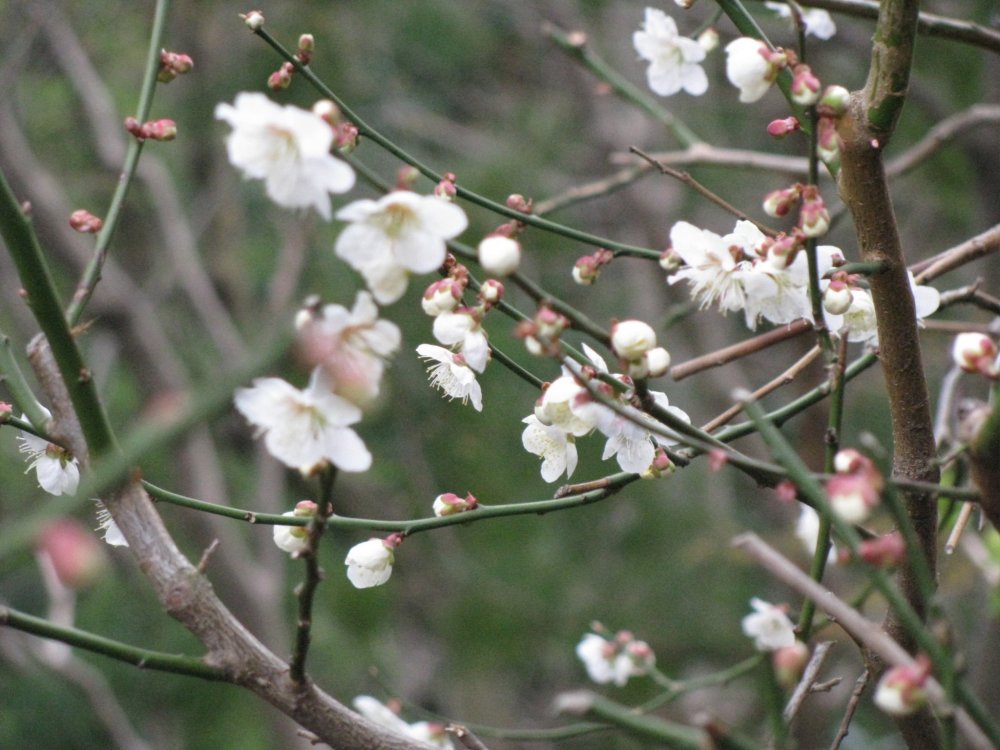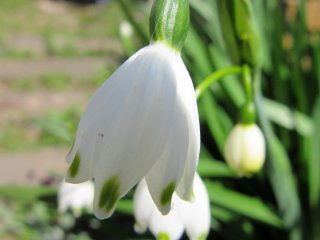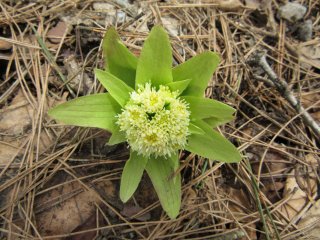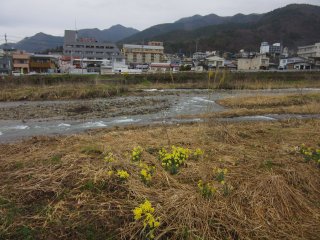Some of my visits to Japan occurred from the end of March to the beginning of April. Days were rather cool and sometimes windy and rainy, but it was a cheerful time as spring was in the air!

The most obvious signs of spring are natural ones, of course. While many trees were still bare, some plants release buds and catkins, and along with those are trees and bushes with flowers. Such early spring flowers are magnolia ‘soulangeana’ which blooms on bare tree branches, and camellia and oleander on evergreen bushes. In early spring some trees already have leaves - especially surprising are red leaves in spring.

Some years, sakura, cherry, starts to bloom quite early in March, but it depends on the region. The 'front' of blooming sakura moves from south to north, from late March to late May (especially late in Hokkaido). But I’ve learnt that Japanese people consider the blooming of the plum tree, called ‘ume’ as the start of springtime. Ume blooms from early February and its blossoms are strong enough to withstand cold and sometimes snow. This is why Japanese respect ume tree and consider it a symbol of courage. Plum gardens look gorgeous and there are numerous plum festivals in early spring, including one in the famous plum garden Kairakuen at Mito. Another great spot for ume is Takao-san – a mountain in a Tokyo suburb. The most beautiful variety of ume are ‘weeping’ or cascading blossoms of bright pink blossoms. I’ve heard many times the opinion that ume blossoms are more beautiful, bright, and impressive than the more famous sakura.
In early spring the grass of lawns is yellow in color. In the countryside quite early you can find blooming field flowers - daffodils, primroses, snowdrops, Lysichiton and few more flowers new to me. Their appearance in contrast to the previous year's yellowed grass is very cheerful as it marks the new and never ending turns of nature. Spring flowers can be found not only in natural landscapes, but in gardens and parks as well.

In spring bamboo produces new sprouts that can be seen growing from the ground among the mature bamboo trees. Young sprouts are brown color and have tiny green leaves. Bamboo sprouts, fukinoto, and some spring flowers are used in food. A wild plant called fukinoto grows up from the ground. Though slightly bitter it is tasty especially cooked in tempura or miso.

On cool spring days onsen hot springs great for relaxation and getting warm. So, a trip in early spring can be less expensive and no less enjoyable tahn any time of year.

























































































